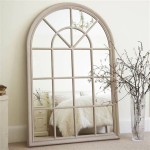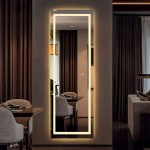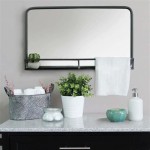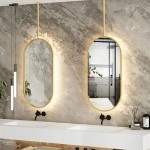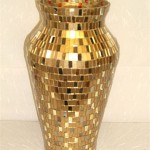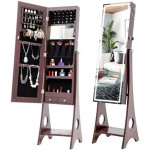How to Hang a Heavy Mirror by Yourself
Hanging a heavy mirror can seem daunting, but with the right tools and techniques, it can be accomplished safely and efficiently without professional assistance. This guide provides a comprehensive step-by-step approach to ensure the mirror is securely mounted and enhances the aesthetics of the space.
1. Assessing the Mirror and Wall
Before beginning, carefully assess both the mirror and the wall where it will be hung. Determine the mirror's weight and dimensions. Inspect the back of the mirror for existing hanging hardware, such as D-rings or wire. Identify the wall type – drywall, plaster, concrete, or brick – as this will influence the type of hardware required. Locate wall studs using a stud finder for optimal support, especially for heavier mirrors. If hanging on drywall without hitting a stud, consider using drywall anchors rated for the mirror's weight.
2. Gathering Necessary Tools and Materials
Having the appropriate tools readily available streamlines the hanging process. Gather the following:
- Measuring tape
- Pencil
- Level
- Drill (if necessary)
- Screwdriver
- Appropriate screws/anchors (based on wall type and mirror weight)
- Stud finder
- Safety glasses
- Heavy-duty picture hanging wire (if not already attached to the mirror)
- D-rings or other appropriate hanging hardware (if needed)
- Painter's tape (optional, for marking)
3. Preparing the Mirror for Hanging
If the mirror doesn't already have hanging hardware, it must be installed. D-rings are a common and secure option for heavier mirrors. Position the D-rings on the back of the mirror, ensuring they are equidistant from the center and level with each other. Use screws appropriate for the mirror's frame material. If using wire, attach it securely to the D-rings, creating a taut, inverted triangle. The wire should be strong enough to support the mirror's weight.
4. Marking the Wall
Accurate measurements are crucial for proper placement. Determine the desired height for the mirror. Measure the distance between the top of the mirror and the hanging wire or D-rings. Transfer this measurement to the wall, marking the desired top edge of the mirror with a pencil or painter's tape. Use a level to ensure the line is perfectly horizontal. Then, measure the distance between the hanging points on the back of the mirror (D-rings or wire). Transfer these measurements to the level line on the wall, marking the locations where the screws or anchors will be placed. Double-check measurements for accuracy.
5. Installing the Wall Hardware
If hanging the mirror on studs, pre-drill pilot holes at the marked locations to prevent the wood from splitting. Then, drive the screws into the studs, leaving a small gap between the screw head and the wall to accommodate the hanging hardware. If not using studs, install appropriate drywall anchors according to the manufacturer's instructions. Ensure the anchors are rated for the combined weight of the mirror and hardware. The type of anchor will depend on the weight of the mirror and the type of drywall.
6. Hanging the Mirror
Carefully lift the mirror and align the hanging hardware (D-rings or wire) with the installed screws or anchors. Gently lower the mirror onto the hardware, ensuring it's securely in place. Use a level to verify the mirror is hanging straight. Make any necessary adjustments.
7. Securing the Mirror (Optional)
For added stability and safety, particularly with very heavy mirrors, consider using additional security measures. Specialized mirror clips or adhesive can be used to secure the bottom edge of the mirror to the wall, preventing tilting or shifting. This is especially recommended in high-traffic areas or homes with children or pets.
8. Final Inspection and Cleaning
Once the mirror is hanging securely, step back and visually inspect the installation. Ensure the mirror is level and flush against the wall. Clean any fingerprints or smudges from the mirror surface with a suitable glass cleaner. Admire your handiwork.
9. Considerations for Different Wall Types
While the basic principles remain the same, different wall types require specific considerations:
- Drywall: Use appropriate drywall anchors for heavy mirrors, ensuring they are weight-rated for the load.
- Plaster: Plaster walls may be brittle. Use appropriate anchors and be cautious when drilling.
- Concrete or Brick: Use a masonry bit and appropriate anchors designed for concrete or brick. A hammer drill may be necessary.

How To Hang Something Heavy Like A Pro Calling It Home

How To Hang A Heavy Mirror For Statement Piece That Won T Budge

How To Hang A Wall Mirror By Yourself Easiest Way
How To Hang A 100 Pound Mirror On Drywall Quora

How To Hang A Heavy Mirror In 5 Simple Steps

How To Hang A Heavy Mirror Or Picture True Value

How To Hang A Heavy Mirror Securely Bob Vila

How To Hang A Heavy Mirror Diy Family Handyman

How To Hang A Mirror With Pictures Wikihow

How To Hang A Heavy Mirror The Home Depot


